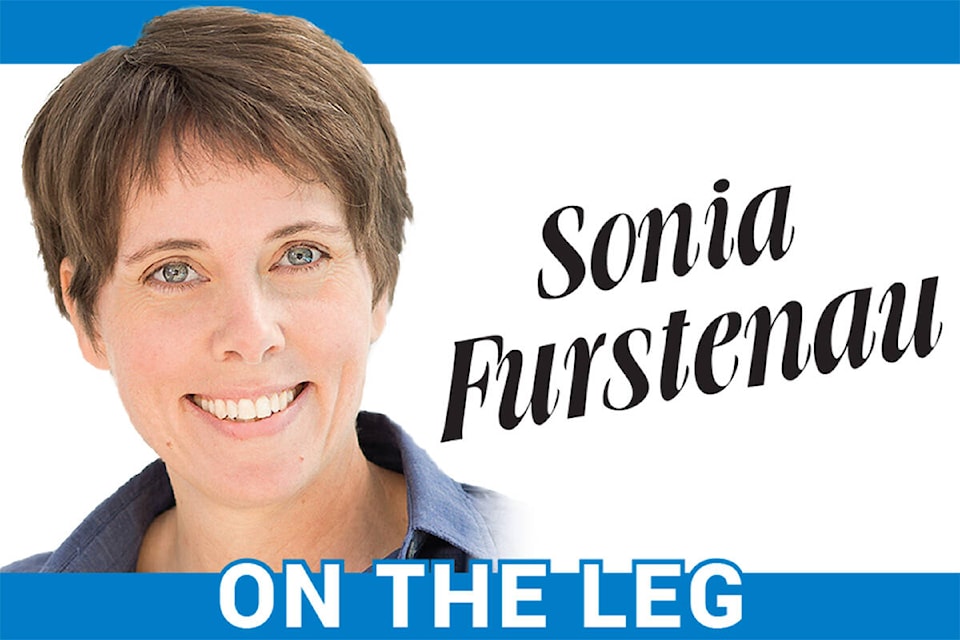In last Tuesday’s COVID-19 update from health officials, Provincial Health Officer Dr. Bonnie Henry noted that with the novel characteristics of the omicron variant — shorter incubation times and much more rapid transmission — new challenges will emerge in the province’s public health response.
Given these characteristics, Henry noted that public health strategies that had worked for previous variants — like case and contact tracing — are comparatively less effective.
Henry warned that as many as a third of a business’s workforce may become ill with COVID-19 at any one point in time, and that such threats meant that “the interruption to our business continuity is something we need to think more about.”
The key message offered was that businesses needed to re-activate the COVID-19 safety plans that they had developed for previous waves of the pandemic to ensure that their businesses stayed open.
Among the actions Dr. Henry recommended for businesses: ensuring people had “the space they need to stay safe,” staggering shifts, using plexiglass barriers, ensuring employees had well-fitting three-layer masks, and enforcing proof of vaccination requirements.
These were cast as proactive measures that all of us can take, in contrast to what Dr. Henry described as the reactionary measures of the province: public health orders.
But this seems to me to be a false dichotomy.
The provincial government’s tools are not limited to shutdowns and closures, though it has largely chosen to limit its response to those actions.
A proactive public health response from the provincial government means intervening to mitigate the spread of infection and its impacts to people. They have the tools: rapid tests, access to PPE and high-quality masks, funding for ventilation units and upgrades, funding to facilitate transitions to remote work, and expanded paid sick leave.
The provincial government’s webpage on supports of businesses, non-profits, and community groups displays a dismal lack of resources from the province. Under the section for “help with business operations and safety,” there are links to marketplaces where businesses can purchase PPE, but there are no resources provided for small-businesses, non-profits, or community groups to obtain adequate and sufficient PPE.
The site also fails to give guidance regarding how to determine what is and isn’t sufficient for different circumstances. This is especially concerning given the consensus that has emerged around the airborne transmission of the virus, and the continued reference to strategies developed when the predominant understanding was that transmission primarily occurred through droplet transmission or surface transmission — like two-metre social distancing, plexiglass barriers, and hand washing/sanitizing.
Knowing that transmission is predominantly occurring through airborne transmission, the provincial government has the tools to support the public in reducing instances of infection.
• The provincial government could and should provide high quality N95 or KN95 masks at either no cost or significantly reduced cost to workplaces for their employees.
• In the event that a workplace can no longer guarantee the safety of its workers and customers, the provincial government should provide financial supports to allow for the temporary closure of a business until a time when it can re-open safely.
• The provincial government could provide easy access to rapid tests and provide guidance on their appropriate use.
• The provincial government could provide grant funding for small-businesses to update ventilation and filtration systems
From purely a financial costs perspective, providing high-quality masks, on-demand access to rapid tests, and ventilation upgrades are almost certain to be less costly than the corresponding demands on ICU care, hospitalizations, and an overwhelmed healthcare system, to say nothing of the human costs of loss of life, the severe illness of family members, and the exhaustion and burnout of under-staffed and under-resourced healthcare workers.
These are the types of proactive measures that government can and should take to ensure not simply business continuity, but the health, safety, and well-being of all of our community members.
Sonia Furstenau is the MLA for the Cowichan Valley and leader of the BC Green Party.
